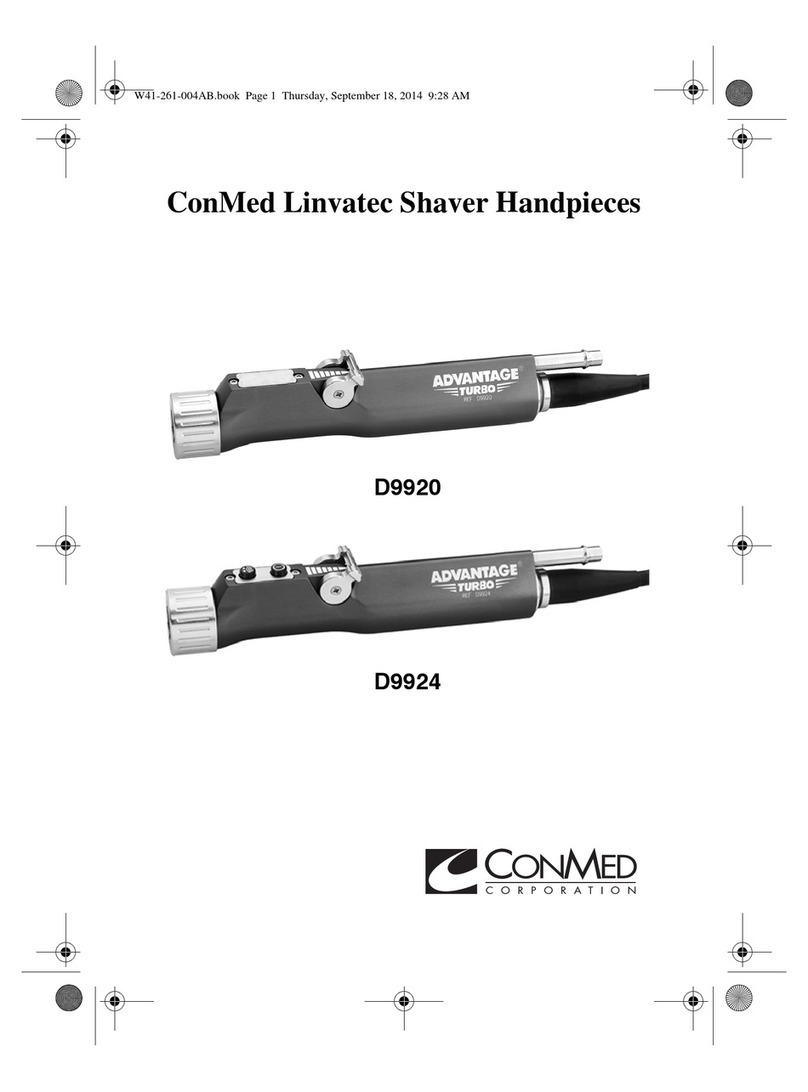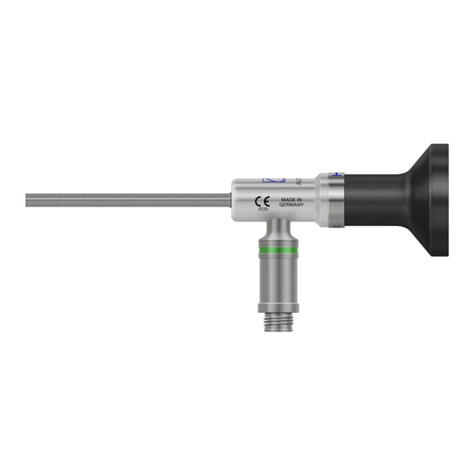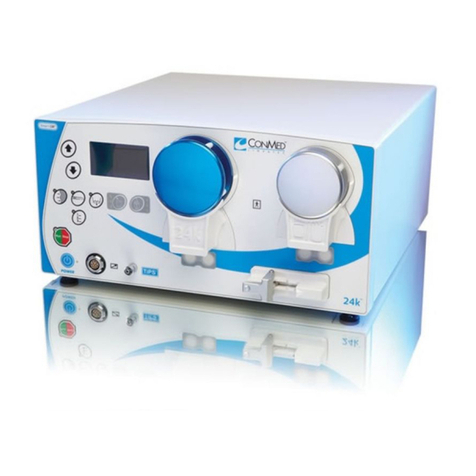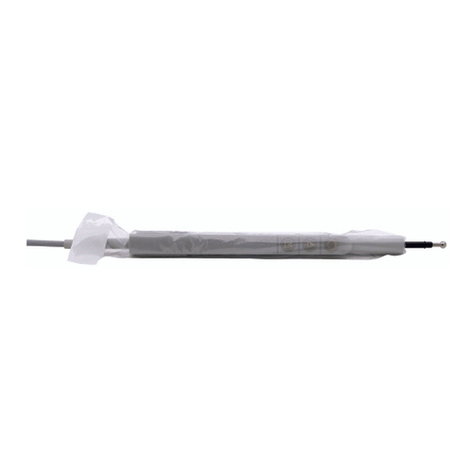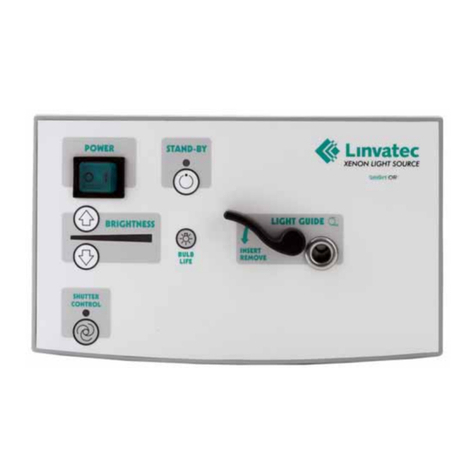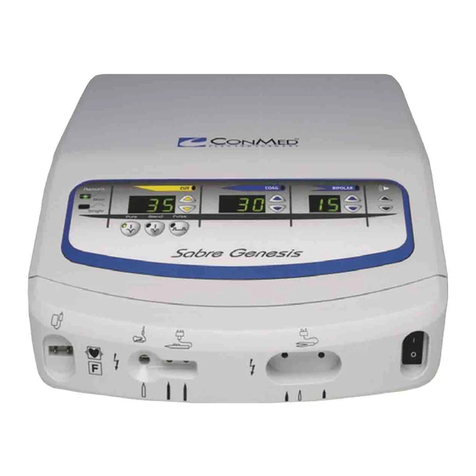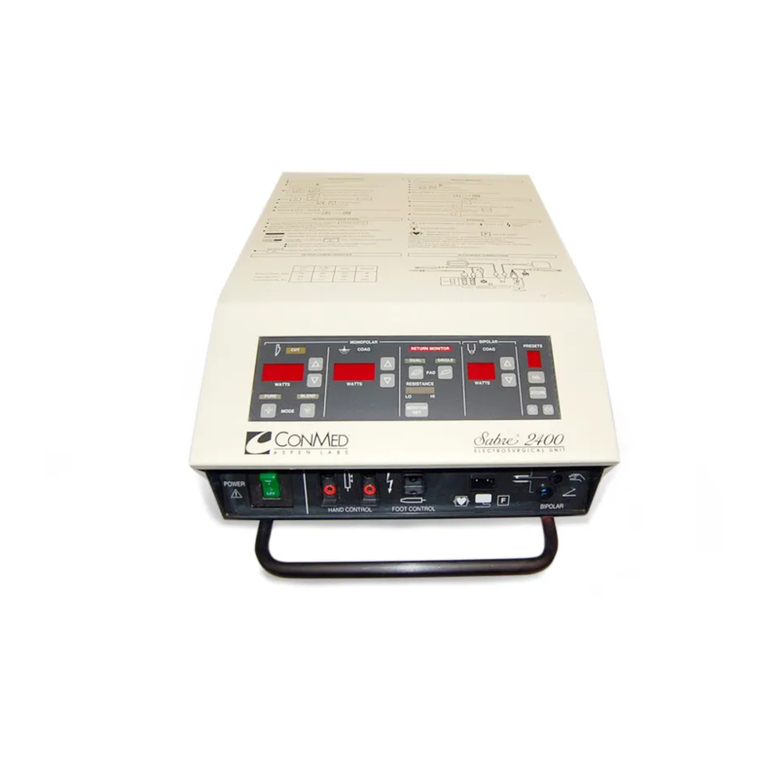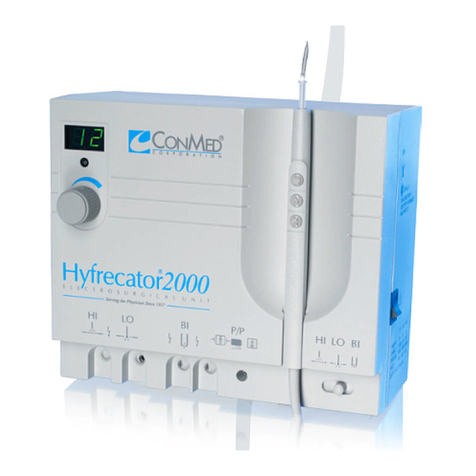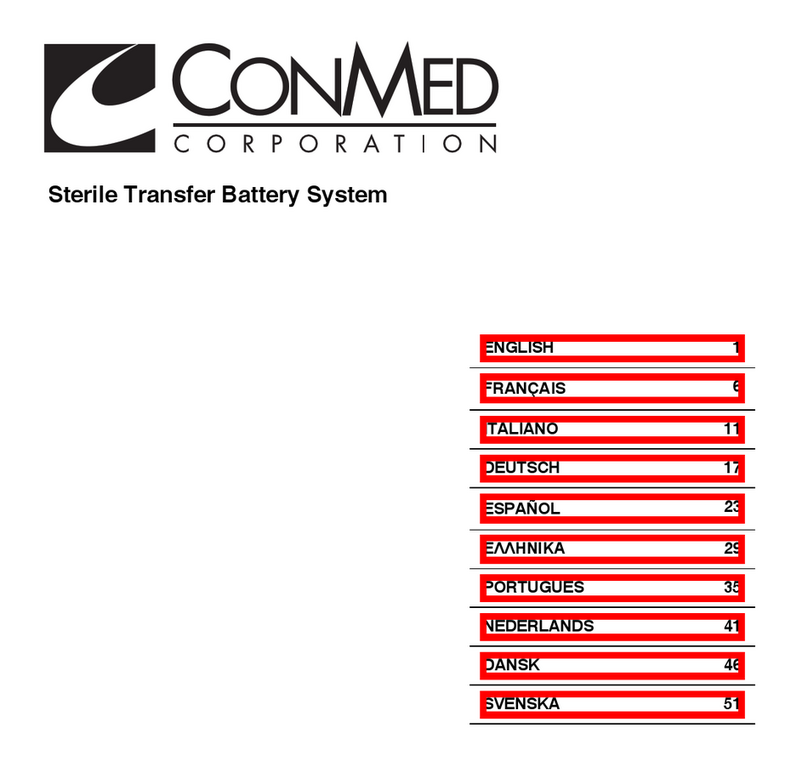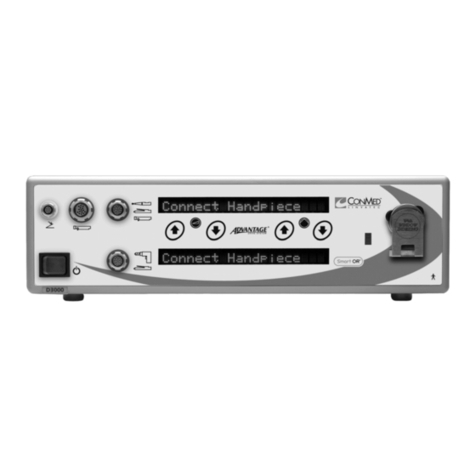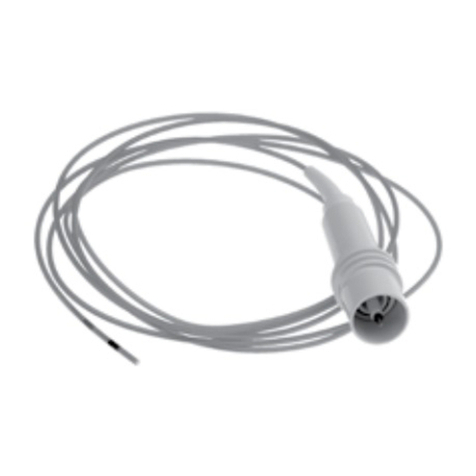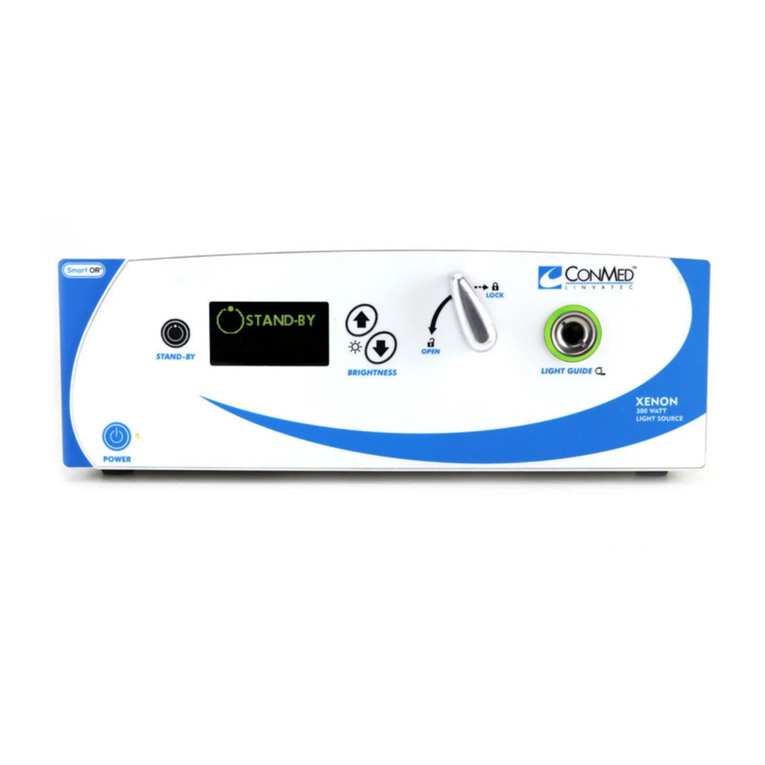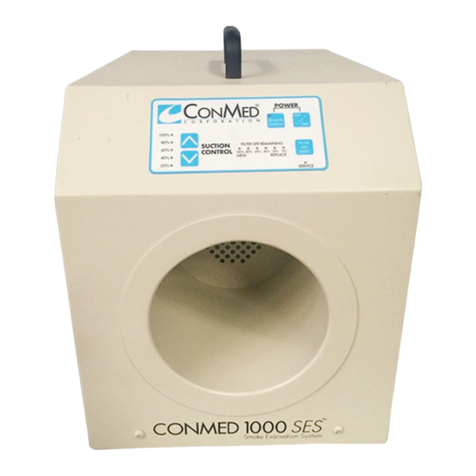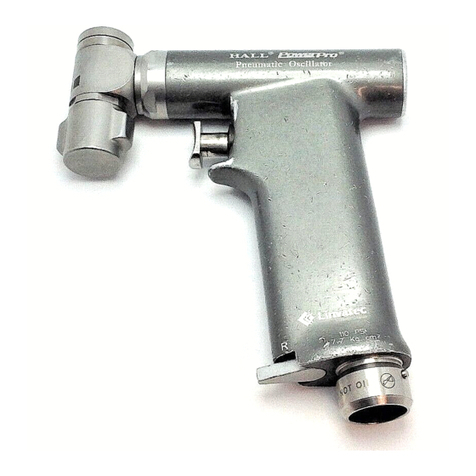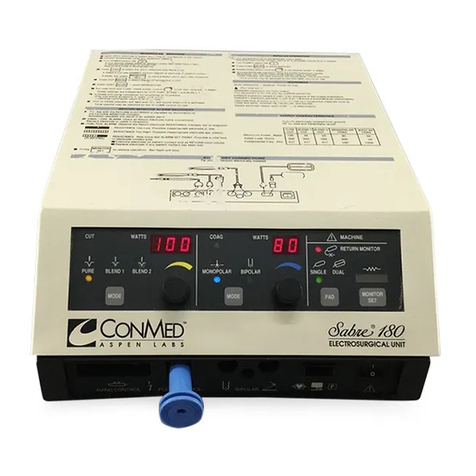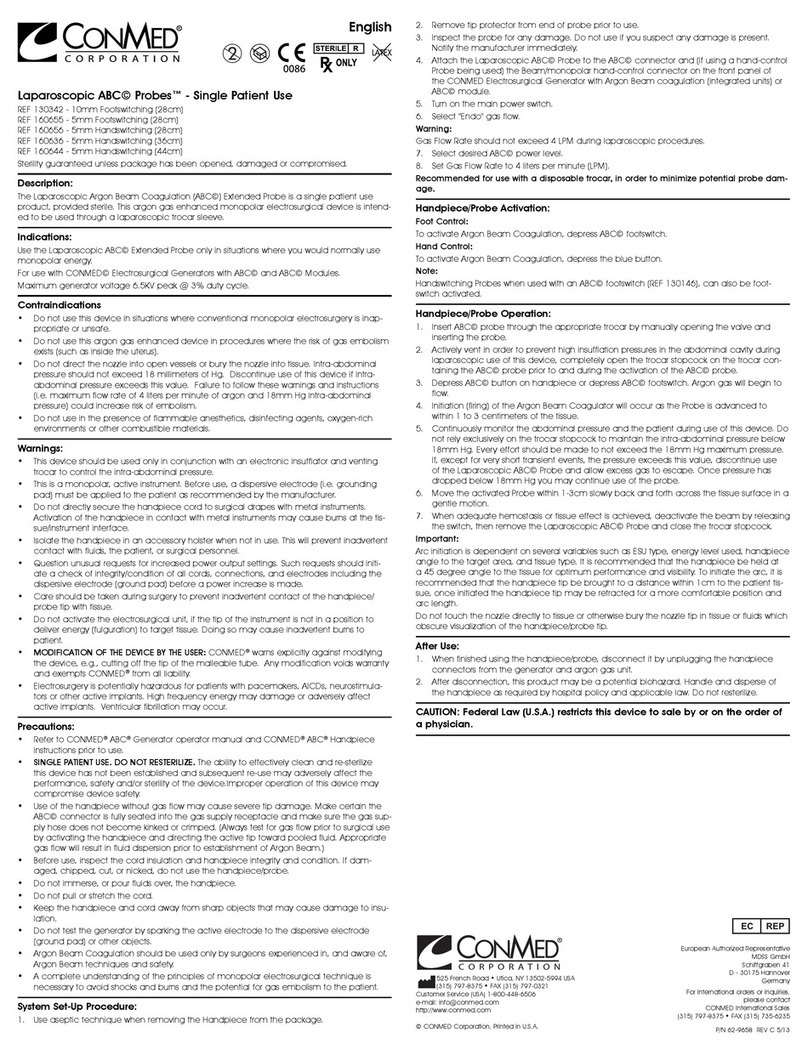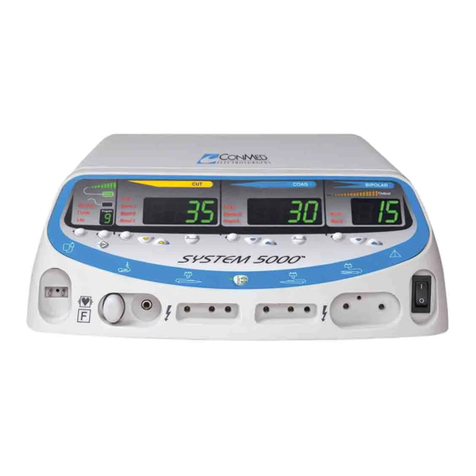
1-3
such as the vagina. Any fluid pooled in these
areas should be removed before the high fre-
quency surgical equipment is used. Due to
the danger of ignition of endogenous gases,
the bowel should be purged and filled with
nonflammable gas prior to abdominal surgery.
To avoid the risk of tracheal fires, never use
electrosurgery to enter the trachea during tra-
cheotomy procedures.
• The System 5000™ mobile pedestal is made of
nonconductive plastic, that can hold a static
charge. It should not be used in a flammable
environment, as described above.
• Only non-flammable agents should be used for
cleaning and disinfection wherever possible.
• Exercise care when relocating the ESU to
avoid electrostatic charge buildup in the pres-
ence of flammable materials, as there is a risk
of igniting these materials if a spark should
occur.
• This ESU is equipped with the Automatic
Return Monitor (A.R.M.™), which monitors
the quality of the dispersive electrode con-
nection. When a correctly functioning single
dispersive electrode is connected to the ESU,
A.R.M.™ verifies the connections between the
ESU, the dispersive electrode cable and the
dispersive electrode. It DOES NOT verify
that a single dispersive electrode is in contact
with the patient. When using a dual disper-
sive electrode, A.R.M.™ confirms the total
resistance is within the preset safety range.
Proper application and visual inspection of the
dispersive electrode is required for safe opera-
tion.
• The use and proper placement of a dispersive
electrode is a key element in safe and effec-
tive electrosurgery. Follow manufacturer’s
directions and recommended practices for the
preparation, placement, use, surveillance and
removal of any dispersive electrode supplied
for use with this electrosurgical unit.
• Apply the dispersive electrode over a well-vas-
cularized muscle mass that is thoroughly clean
and dry. Clean and clip site, as necessary, to
provide adequate electrical connection and per
hospital policy. Avoid placement over scar tis-
sue, bony prominences or other areas where
pressure points on small areas might develop.
• Because of the risk of burns, needles should
never be used as a dispersive electrode for
electrosurgery. The entire area of the disper-
sive electrode should be placed so that the
entire conductive area is in firm contact with
an area of the patient’s body that has a good
blood supply and is as close to the operative
site as possible. In general, electrosurgical
current paths should be as short as possible
and should run either longitudinally or in a
diagonal direction to the body, not laterally
and under no circumstances lateral to the tho-
rax.
• Dispersive electrodes and probes of monitor-
ing, stimulating and imaging devices can
provide paths for high frequency currents
even if they are battery powered, insulated
or isolated at 50/60 Hz. The risk of burns
can be reduced but not eliminated by placing
the probes as far away as possible from the
electrosurgical site and the dispersive elec-
trode. Protective impedances incorporated
in the monitoring leads may further reduce
the risk of these burns. Needles should not
be used as monitoring electrodes during
electrosurgical procedures.
• When high frequency surgical equipment
and physiological monitoring equipment are
used simultaneously on the same patient, all
monitoring electrodes should be placed as far
as possible from the surgical site and disper-
sive electrode. Needle monitoring electrodes
are not recommended. Monitoring systems
incorporating high frequency current limiting
devices are recommended whenever possible.
• The active electrode should not be used in the
vicinity of electrocardiograph electrodes.
• Heat applied by thermal blankets or other
sources is cumulative with the heat pro-
duced at the dispersive electrode (caused by
electrosurgical currents). Choosing a disper-
sive electrode site that is remote from other
heat sources may minimize risk of a patient
injury.
• Electrosurgery, by its nature produces signifi-
cant levels of electromagnetic interference
(EMI) when the ESU is activated. This EMI
may damage or impair the function of other
electronic equipment in the operating room,
especially equipment that makes contact
with the patient. Adverse effects can only be
mitigated by use of equipment specifically
designed to tolerate electrosurgical interfer-
